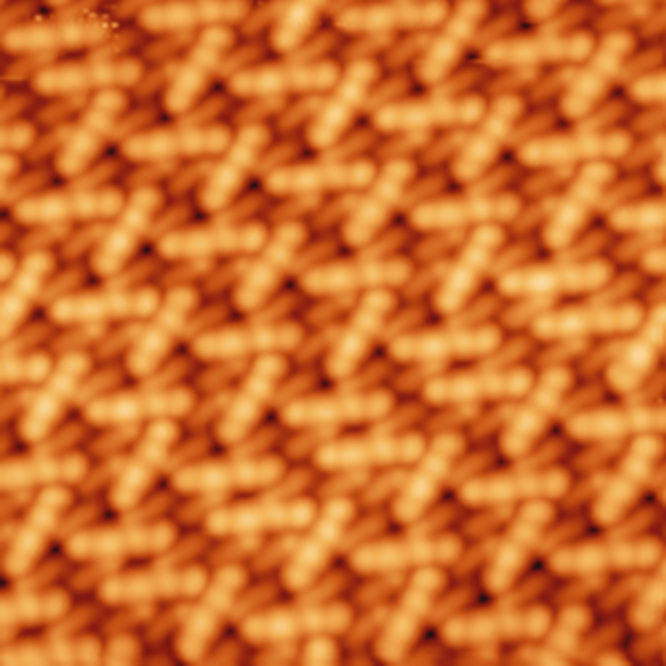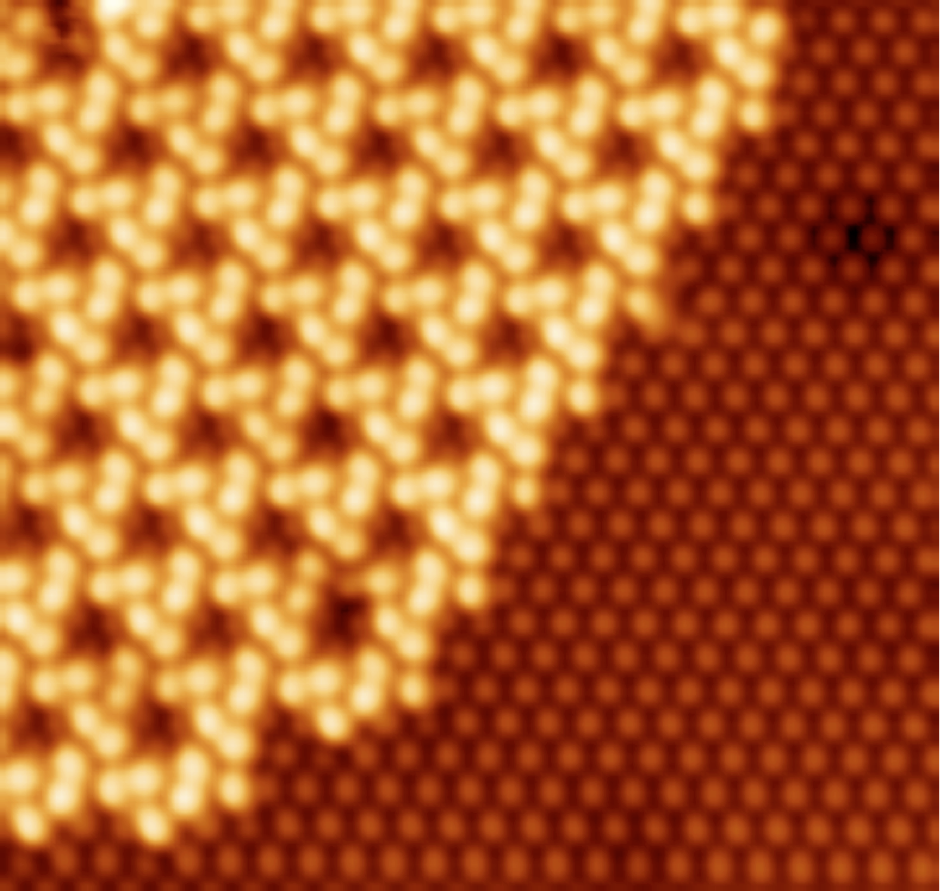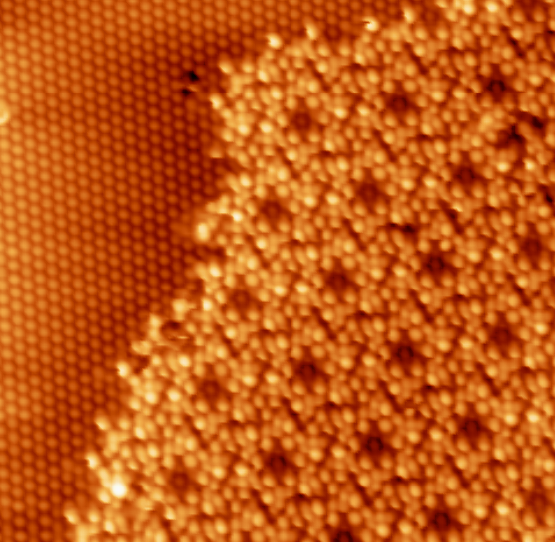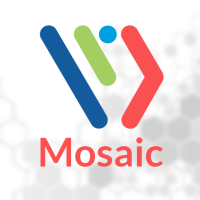Nanosciences
Our main objective is to understand the physical and chemical processes in which local interactions lead to ordered structures is of particular relevance to the realization of (supra)molecular architectures on surfaces with unusual physical, chemical or catalytical properties. Our works merge chemistry, physics, surface science and scanning probes microscopies. Nanosciences group is composed by Prof. Dr. Frank PALMINO, Dr Fréderic CHERIOUX (CNRS senior scientist), Vincent LUZET( UFC Engineer) and Judicael Jeannoutot, a CNRS engineer.
We possess two UHV-STM set-ups, an AFM under ambient conditions and a full synthetic chemistry lab, involved in the SURFACE Platform.
Supramolecular Self-assembly on a silicon surface
While spectacular patterns have been demonstrated on metal surfaces, there have been fewer studies of the spontaneous organization of supramolecular networks on semiconductor surfaces, where the formation of covalent bonds between organics and adatoms usually hamper the diffusion of molecules and their subsequent interactions with each other. However, the saturation of the dangling bonds at a semiconductor surface is known to make them inert and offers a unique way for the engineering of molecular patterns on these surfaces.
We have demonstrated the general rules to achieve the formation of large extended 2D supramolecular networks on the B-Si(111)-(√3x√3) R30° surface. By varying the symmetry of the molecules and their end groups, the self-assembly of molecular networks with different geometries have been demonstrated and thoroughly characterised. The successful forma- tion of molecular networks is achieved thanks to the passivation of the majority of Si dangling bonds at the surface of the Si crystal, despite the presence of surface point defects that do not modify the local surface potential to the point of hampering the self-assembly process. Of prime importance is the formation of pores on sizeable areas. The ultimate goal is then to take advantage of these self-assembled regular patterns to further modify a semiconductor surface at dimensions smaller than the typical sizes reached by electron-beam lithography.



Three STM images of three different supramolecular networks self-assembled on a Si(111)-B surface with atomic resolution of the surface and sub-molecular resolution of the molecules. Image size: 20x20nm²
Beyond self-assembly, on-surface chemistry and on-surface catalysis
The investigation of elementary steps of heterogeneous catalysis by approaches in surface science is intensively studied since scanning probes microscopies (SPM) were developed and popularized in the mid 90‟s. SPM, with their unique ability to reach the spatial limit at the atomic level, helped in the design and improvement of catalysts. Many works have been successfully devoted to detailed investigations of the catalytic properties of solid inorganic surfaces by SPM. However, the investigation of catalytic properties of molecular complexes by SPM is almost unknown despite the intense use of metal complexes in homogeneous catalytic processes. We address this point by using the STM-tip as an active source of electrons in order to provoke unusual chemical reactions or new catalytic cycles. Each elementary steps are monitored in situ by using STM.
Skills and facilities
Our group possesses a strong background in the synthesis of organic molecules and in the study of their characterizations by STM experiments. During the last 5 years has published more than 30 papers in the field of supramolecular self- assembly on surfaces investigated by scanning probe microscopies. We possess a full set-up of chemical facilities (NMR, UV-Vis and FT-IR spectra for solid or liquid samples characterization) and scanning probe microscopies (an UHV-Electrospray, 1 UHV-LT-STM, 1 UHV-VT-STM/AFM and AFM in ambient conditions) which are involved in the SURFACE platform.
Ongoing project
HITS
Organic spintronic devices are extremely polyvalent due to the versatility of chemistry. However, a better fundamental understanding of these hybrid organic/inorganic interfaces is necessary because there are still many open questions about the spin transport through these interfaces.…
Read more ...
LIGHT4NET
Ordered arrays of nanoscale objects supported on a surface are of growing interest for many technological applications. Nevertheless, the fabrication of extended regular structures is quite challenging and mainly reported for self-assembled supramolecular structures on metal surfaces.
...Read more ...
OVATION
Activation of small molecules, such as N2 by metal-based complexes often occurs via mechanisms involving changes in redox state, spin state, bond breaking and formation. Therefore radical reactions are particularly suited for providing insights into such aspects...
Read more ...
ATOMICHEM
Tools capable of exploring matter with ultimate spatial resolution have attracted a tremendous interest over the past decades. Among those, scanning probe microscopes (SPMs) have played a pre-eminent role allowing one to visualize, manipulate and address electronic, magnetic or optical properties with atomic-scale resolution. A drawback of SPMs is their very low chemical sensitivity, a constant limitation for investigations aiming at characterizing fundamental chemical phenomena occurring at the molecular level. Conversely, Raman spectroscopy constitutes a powerful chemical identification tool that provides extremely detailed and direct information on the structure of organic species, but whose spatial resolution is intrinsically limited by diffraction.
UNDERGROUND
The project aims at meeting environmental challenges related to land restoration following its use by oil industry infrastructures by providing the means for long term monitoring of organic pollutants in the subsurface.

